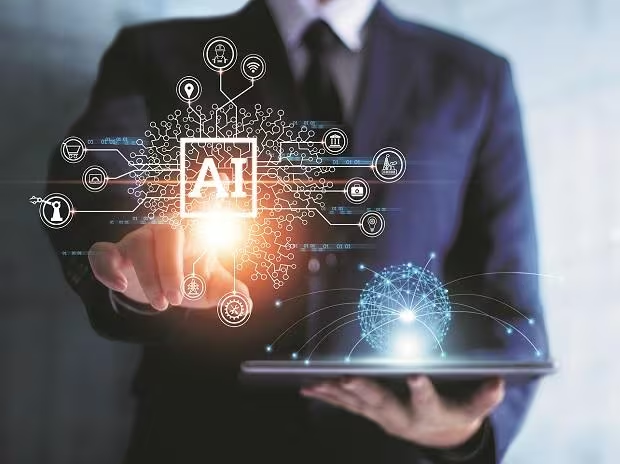What Are The Top AI/ML Algorithms Used by Tech Giants ?

Artificial Intelligence (AI) and Machine Learning (ML) are no longer just buzzwords. They are the core technologies reshaping how businesses operate, products are developed, and services are delivered. Leading tech giants, such as Google, Amazon, Microsoft, Facebook, and Apple, are leveraging these technologies to innovate, automate, and enhance the user experience. In this post, we’ll dive into the foundational concepts of AI and ML, explore the top algorithms driving these technologies, analyze their benefits, and speculate on the future directions of AI and ML in the tech industry.
What Are AI and ML?
Before exploring the algorithms that power AI, it’s essential to understand the difference between Artificial Intelligence and Machine Learning.
- Artificial Intelligence (AI) is the broader concept, referring to the simulation of human intelligence in machines. AI systems can reason, solve problems, plan, understand language, and even exhibit creative behaviors. AI encompasses a variety of techniques, including rule-based systems, expert systems, robotics, and neural networks.
- Machine Learning (ML) is a subset of AI focused on algorithms that allow machines to learn from data, adapt, and improve without explicit programming. In ML, systems are trained using large datasets to recognize patterns, make predictions, and optimize processes. It’s important to note that all ML is AI, but not all AI is ML.
The Role of AI and ML in Tech Giants
Tech companies have embraced AI and ML to automate processes, drive innovation, and provide personalized experiences to users. Here are some of the ways these technologies are applied:
- Google:
- AI/ML applications: Google uses AI and ML in its Search Engine, Google Assistant, Google Translate, YouTube recommendations, and DeepMind. Google’s BERT model, a transformer-based deep learning model, significantly improves search engine results by better understanding natural language queries.
- Amazon:
- AI/ML applications: Amazon employs AI and ML in its recommendation system, Alexa, Prime Video suggestions, and for optimizing warehouse operations. Amazon Web Services (AWS) provides cloud-based machine learning tools like SageMaker for building custom models.
- Microsoft:
- AI/ML applications: Microsoft uses AI and ML in Microsoft Office for features like grammar check and predictive text, as well as in Cortana, their virtual assistant. Additionally, Azure AI offers cloud-based machine learning solutions for enterprises.
- Facebook (Meta):
- AI/ML applications: Facebook uses AI for content moderation, personalized ads, photo and video recognition, and the development of chatbots. Facebook’s PyTorch deep learning framework is widely used by AI researchers.
- Apple:
- AI/ML applications: Apple integrates ML in Siri, facial recognition on iPhones, Apple Music recommendations, and healthcare apps. Apple’s Core ML framework allows developers to integrate machine learning into iOS applications efficiently.
Top AI/ML Algorithms Used by Tech Giants
AI and ML algorithms are the heart of these applications. Let’s look at the top algorithms that power the tech giants:
1. Neural Networks (Deep Learning)
- What it is: Deep learning, a subset of neural networks, involves layered networks of nodes (neurons) that process information. It’s capable of handling complex data like images, audio, and text.
- Used by: Google, Facebook, Microsoft, Apple
- Applications: Image recognition, natural language processing (NLP), autonomous driving, speech recognition.
- Example: Google’s DeepMind uses deep learning to power innovations like AlphaGo and AlphaFold, which have achieved groundbreaking results in games and biological research.
2. Random Forest
- What it is: An ensemble learning technique that creates multiple decision trees during training and merges them for more accurate predictions.
- Used by: Amazon, Microsoft
- Applications: Classification tasks, recommendation engines, fraud detection.
- Example: Amazon uses Random Forest to personalize product recommendations and optimize inventory management.
3. Gradient Boosting Machines (GBM)
- What it is: GBM is another ensemble technique that builds models sequentially. Each tree corrects errors from the previous one.
- Used by: Microsoft, Facebook
- Applications: Predictive analytics, ranking tasks, recommendation systems.
- Example: Microsoft uses GBM in its Azure Machine Learning platform for various prediction models, including customer churn and demand forecasting.
4. Support Vector Machines (SVM)
- What it is: SVM is a supervised learning model used for classification and regression by finding the hyperplane that best separates data into different classes.
- Used by: Facebook, Apple, Google
- Applications: Image classification, speech recognition, text categorization.
- Example: Facebook uses SVM for automated content moderation and image recognition tasks.
5. K-Means Clustering
- What it is: A clustering algorithm that divides data into K groups based on similarities.
- Used by: Amazon, Facebook
- Applications: Customer segmentation, anomaly detection, pattern recognition.
- Example: Amazon uses K-Means clustering to segment customers based on purchasing behaviors and optimize personalized recommendations.
6. Natural Language Processing (NLP) Models
- What it is: NLP focuses on enabling machines to understand and generate human language. Models like BERT, GPT, and Transformers are key for tasks like language translation, sentiment analysis, and text summarization.
- Used by: Google, Amazon, Facebook
- Applications: Search engines, voice assistants, chatbots, and text analysis.
- Example: Google’s BERT has significantly enhanced its search engine by understanding the context and nuances in search queries.
7. Reinforcement Learning (RL)
- What it is: A type of machine learning where an agent learns to make decisions by interacting with an environment and receiving rewards or penalties based on its actions.
- Used by: Google, Facebook, Microsoft
- Applications: Autonomous systems, gaming, robotic process automation.
- Example: Google’s AlphaGo, which defeated a world champion Go player, uses reinforcement learning to make decisions based on the game’s state.
Benefits of AI and ML for Tech Giants
The integration of AI and ML brings a wide range of benefits to both tech giants and their customers:
- Personalization: By analyzing vast amounts of user data, AI enables companies to provide highly personalized recommendations (e.g., Amazon product suggestions, Netflix content recommendations).
- Automation: AI and ML automate repetitive tasks, improving operational efficiency. For example, AI-powered chatbots and virtual assistants (like Amazon’s Alexa and Apple’s Siri) handle customer service queries.
- Improved Decision-Making: AI models help businesses make data-driven decisions. For example, ML algorithms used for predictive analytics help companies forecast demand and optimize resource allocation.
- Enhanced User Experience: AI enhances user interaction through voice recognition, facial recognition, and NLP. Apple’s FaceID and Google’s Google Assistant are prime examples of improving the user experience.
- Cost Reduction: Automation powered by AI reduces the need for manual labor, improving efficiency and reducing operational costs. For example, Amazon’s use of robots in warehouses significantly reduces logistics costs.
Future Speculations: Where Is AI and ML Going?
As AI and ML continue to evolve, several future trends and developments are likely to shape the landscape:
- AI Democratization: With cloud platforms like AWS, Google Cloud, and Azure, more businesses will gain access to powerful AI tools without needing extensive in-house expertise. This democratization will accelerate AI adoption across industries, including healthcare, finance, and retail.
- Edge AI: The future of AI will involve processing data at the edge (on local devices) instead of sending it to a central cloud server. This will reduce latency and improve real-time decision-making. Apple is already leveraging edge AI in its devices with Core ML, and this trend will expand.
- Explainable AI: As AI models become more complex, understanding how they arrive at decisions will be crucial. The push for explainable AI (XAI) will make AI systems more transparent and trustworthy, particularly in critical fields like healthcare and finance.
- AI in Creativity: AI’s ability to generate new content—such as writing articles, composing music, and designing images—will continue to advance. Tools like OpenAI’s GPT-3 and Google’s DeepDream have already demonstrated this potential, and future innovations will enhance creative collaboration between humans and machines.
- General AI: While we’re far from achieving Artificial General Intelligence (AGI), research is progressing. AGI would be a system capable of performing any intellectual task that a human can do, leading to advancements that could transform industries and society as a whole.
- Ethical AI: As AI becomes more pervasive, the ethical considerations surrounding data privacy, bias, and decision-making will become even more important. Tech giants will face increasing pressure
